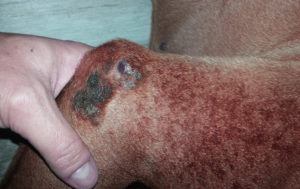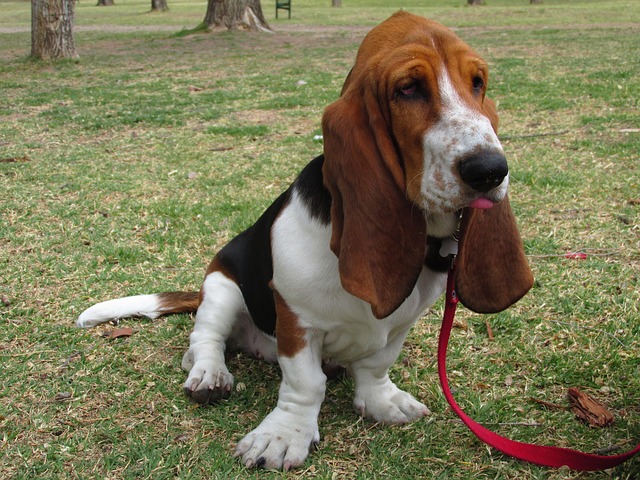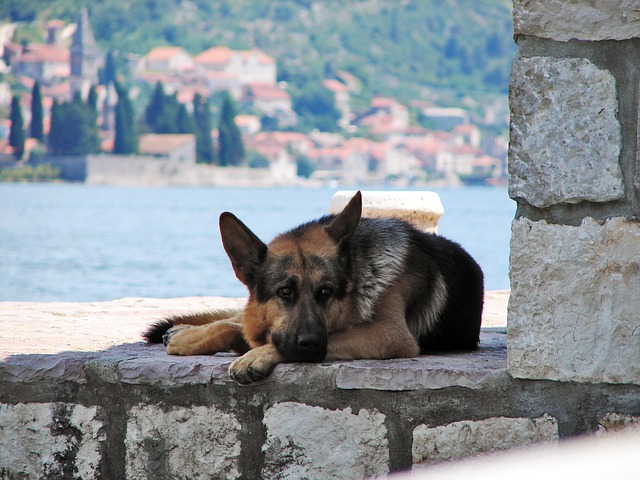
Elbow calluses, a thickened patch of rough skin, may look harmless enough, but they can crack and bleed or turn into painful ulcers or weeping sores. Elbow hygroma, a fluid-filled area on the elbow, may cause discomfort for your dog. Untreated calluses can even lead to infections. Luckily, preventing elbow calluses from forming in the first place may be easier than you think.
Elbow calluses are generally caused by the pressure placed on a dog’s joints when they spend a lot of time lying on a hard surface. Providing your dog with several well-placed plush dog beds, especially ones that contain orthopedic foam, can go a long way towards keeping your dog’s joints cushioned and preventing calluses from forming. Does your dog prefer the cool tile or hardwood to his plush bed? Try enticing him to lie on his bed with treats. You can also try placing ice packs wrapped in towels in your dog’s bed to provide a cool alternative to the hard floor.

While any dog can get elbow calluses, senior, injured, or arthritic dogs are more prone to calluses than younger, healthier dogs. Large and giant dog breeds, especially those with short coats, are also extremely prone to elbow calluses. While this isn’t an exhaustive list, these are some of the dog breeds that are the most prone to elbow calluses.
-Great Dane
-Mastiff
-Bullmastiff
-Labrador Retriever
-Cane Corso
-Irish Wolfhound
-Basset Hound

-Bloodhound
-Boxer
-Rottweiler
-Rhodesian Ridgeback
-Weimaraner
-Vizsla
-St. Bernard
-German Shepherd

Elbows are the most common joints to be affected by calluses, but they aren’t the only areas that can be affected when a dog spends a lot of time lying on a hard surface. Any bony area without a lot of muscle or fat covering it may be at risk of developing a callus, such as the hips, hocks, and even chest.
If you have a dog breed that is prone to calluses, you’ll want to check their skin regularly for signs of thickening skin. Calluses are much easier to treat when they first start out, and tackling them sooner can help prevent infection.
If you spot any signs of fluid, weeping, oozing, or infection, then you should take your dog to the vet to get checked out. If your dog just has a normal-looking callus, these treatments may help soften up that tough skin.
-Vitamin E rubbed into the callus can help soften it up and may even speed up the healing process.
-Coconut oil massaged into a callus can penetrate below the tough skin for even deeper healing. Coconut oil has lubricating, anti-fungal, and antibiotic properties, which helps make it a great choice for healing calluses.
-Shea Butter is
–A Note About Petroleum Jelly, Vaseline, & Aquaphor: Traditionally, petrolatum jelly based products has been a popular product for rough skin in dogs. However, we’d advise against a product that is derived from petroleum, as dogs will inevitably lick and ingest it.
Any of the previous home remedies should be left on for 10-15 minutes before allowing your dog onto your furniture, as they can all be very greasy and will rub the grease off onto your furniture.

These statements have not been evaluated by the Food and Drug Administration. This product is not intended to diagnose, treat, cure, or prevent any disease. The information on this website is not intended to replace a one-on-one relationship with a qualified healthcare professional.
(H/T: Cuteness; The Blissful Dog; Dogs, Cats, Pets)
via Whisker Therapy